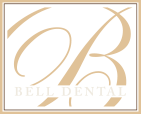Non-Surgical TMJ Disorder Treatment
 Temporomandibular joint (TMJ) disorder can cause a range of uncomfortable and distressing symptoms, including facial pain and lockjaw. Fortunately, there are a variety of non-surgical TMJ treatments available which can reduce or eliminate these symptoms and improve the health of your jaw. In many cases, TMJ disorder, also known as TMD, responds well to home care techniques and other conservative, non-surgical treatments. A dentist who has experience treating TMD can evaluate your symptoms and recommend a treatment plan tailored to restoring the comfort and proper function of your smile.
Temporomandibular joint (TMJ) disorder can cause a range of uncomfortable and distressing symptoms, including facial pain and lockjaw. Fortunately, there are a variety of non-surgical TMJ treatments available which can reduce or eliminate these symptoms and improve the health of your jaw. In many cases, TMJ disorder, also known as TMD, responds well to home care techniques and other conservative, non-surgical treatments. A dentist who has experience treating TMD can evaluate your symptoms and recommend a treatment plan tailored to restoring the comfort and proper function of your smile.
The Benefits of Non-Surgical Treatment
For patients with TMJ disorder, non-surgical treatments offer significant benefits. These treatment options are conservative, reversible, and do not involve the recovery time associated with surgery. Typically, non-surgical treatment options are more affordable than surgery as well.
Your Treatment Options
Depending on the severity of your symptoms and your lifestyle, your dentist can recommend a non-surgical treatment to reduce your discomfort and improve your jaw health. Non-surgical treatments for TMD range from home care techniques to alternative methods, such as BOTOX®.
Home Care
Mild to moderate symptoms of TMD often respond to self-care techniques at home. Some common home care treatments include:
- Taking over-the-counter medications, such as aspirin or Tylenol®
- Avoiding jaw movements which stress the joints, such as wide yawning or excessive gum chewing
- Improving the posture
- Using ice packs or moist heat on the jaw joints
- Practicing stress management and relaxation techniques
Changing your diet can also help minimize the amount of stress placed on your temporomandibular joints. Limiting your intake of hard foods which require a lot of chewing can take stress off of your TMJs and reduce your symptoms.
Mouthguards
 A custom mouthguard fits over teeth to prevent clenching and grinding. Depending on the type of symptoms you experience, your dentist may recommend a simple mouthguard to limit your ability to grind your teeth or a more complex guard specifically designed for TMD.
A custom mouthguard fits over teeth to prevent clenching and grinding. Depending on the type of symptoms you experience, your dentist may recommend a simple mouthguard to limit your ability to grind your teeth or a more complex guard specifically designed for TMD.
Orthodontics
If your TMJ disorder is related to a misalignment, your dentist may suggest orthodontic treatment, such as a splint, braces, retainers, or Invisalign®. These treatments can realign your smile for a more comfortable bite which, in turn, can address your symptoms.
Jaw Exercises
Based on an analysis of your jaw movements, your dentist can teach you certain exercises so you can learn to control your jaw muscles and eliminate clenching. These simple exercises are often performed in front of a mirror.
Physical Therapy
For persistent symptoms of TMD, your dentist or doctor may refer you to a physical therapist who can combine multiple treatments together to help improve your symptoms. Common treatment used in physical therapy include ultrasound, moist heat, and ice, along with stretches and exercises.
Prescription Medications
Certain prescription medications, such as muscle relaxers and higher doses of NSAID pain relievers, can provide relief for the symptoms of TMD. If your concerns are related to stress or other mood issues, your doctor may recommend anti-anxiety medication or antidepressants.
Restoring proper bite alignment can often eliminate the symptoms of temporomandibular joint disorder.
Restorative Dental Work
In some cases, placing crowns or reshaping certain teeth can adjust the position of the jaw and reduce stress on the TMJs. Restoring proper bite alignment can often eliminate the symptoms of temporomandibular joint disorder.
Neuromuscular TMJ Treatment
The goal of neuromuscular TMJ treatment is to realign the jaw and reduce inflammation in the surrounding muscles. This treatment method involves the use of computer imaging systems to provide personalized two-stage treatment plans involving multiple treatments.
Trigger-Point Injections
For some symptoms, injecting pain medication or anesthesia directly into tender face muscles can provide relief from pain and discomfort.
Transcutaneous Electrical Nerve Stimulation (TENS)
This alternative treatment for TMJ disorder uses low-level electrical currents to relax the jaw joint and facial muscles for pain relief.
Radio Wave Therapy
For some patients, stimulating the TMJs using radio waves can increase blood flow to the area and reduce pain.
Low-Level Laser Therapy
Certain types of therapeutic lasers can lower pain and inflammation in the joints, restoring proper range of motion in the neck and jaw joints.
There is evidence which suggests that BOTOX can reduce hyperactivity in the jaw muscles and prevent clenching and grinding.
BOTOX for TMJ
There is evidence which suggests that BOTOX can reduce hyperactivity in the jaw muscles and prevent clenching and grinding. Limiting these destructive habits can reduce the level of stress on the temporomandibular joints, providing relief from pain and other symptoms.
Eliminate Your Symptoms without Surgery
By choosing a conservative, non-surgical treatment for TMJ disorder, you can reduce your symptoms without costly and invasive surgical procedures. Learn more about your non-surgical treatment options for TMJ disorder by contacting a doctor today.



